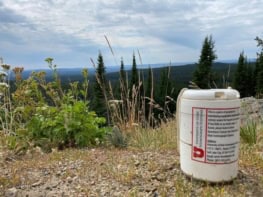By James Dacey in Mexico
From pre-Hispanic archaeological treasures to the Modernist paintings of Frida Kahlo and Diego Rivera, Mexico is brimming with cultural artefacts. Yesterday I visited a centre at the National Autonomous University of Mexico (UNAM) that has developed techniques for investigating precious objects without damaging them.
The project, Análisis No Destructivo para el Estudio in situ del Arte, la Arqueología y la Historia (ANDREAH) has its origins around 10 years ago. UNAM physicists, led by José Luis Ruvalcaba, developed imaging techniques and equipment that could be taken out of the lab to local museums in Mexico. This addressed the problem that many items are simply too precious to transport back to the university.
The aim is to develop a better understanding of materials for the sheer joy of the knowledge, but also to inform conservationists on how to best look after these artefacts.
During the past decade Ruvalcaba’s group has studied objects all over Mexico, including the Mayan cities of Palenque (in the southern state Chiapas) and Chichen Itza (in the south-eastern state of Yucatán). The team’s analysis often involves a combination of techniques including X-ray fluorescence and other light reflectance spectroscopy.
Much of the analysis is also carried out at UNAM’s pelletron accelerator facility, which provides a source of protons. And just last year, the group secured funding to open up a second lab next door with a suite of other equipment including X-ray sources and a large collection of reference materials such as jade, glass and various types of pigment mixes. The lab will have its official inauguration later this year but Ruvalcaba gave me a sneak preview of what to expect (see video above).
Similar facilities do exist in Europe, including the mini accelerator facility at the Louvre, but according to Ruvalcaba this is the first national institution of its type in the world.



